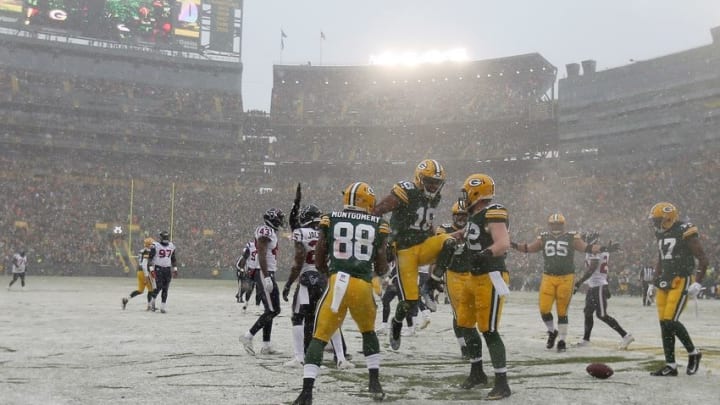
Field position advantage
Field position is something which always tends to get lost in the large-scale shuffle of discussions as to why a team wins or loses.
People end up talking about how their team’s offense struggled or their defense was beaten, but they forget to factor in the degree of difficulty which is added to the equation when that offense has to constantly make extended drives to get into scoring range or that defense is backed up on a short field. In games where the weather is also adversely affecting things — as was the case here with the snow — it becomes even more paramount.
Luckily for Green Bay, more often than not they had the fortune of positive field position working in their favor during this game, both for their offense and defense.
On offense, Green Bay saw six of their ten drives begin at least at their own 40 yard line:
- Houston 24 yard line
- Green Bay 47 yard line
- Midfield
- Green Bay 40 yard line
- Green Bay 44 yard line
- Green Bay 48 yard line
For the most part, they didn’t end up taking advantage of these — respectively, those drives became a fumble, punt, TD, punt, turnover on downs, and punt — but even when those drives don’t convert into points, that strong starting field position has the indirect effect of allowing the Packers to potentially pin back their opponent for their own ensuing drive.
Looking at the way field position worked out for their defense, it should be pretty apparent how much that helped them out.
Houston ended up with eleven total drives in the game. Of those, Houston began five of them at their own 15 or worse:
- Houston 5 yard line
- Houston 11 yard line
- Houston 11 yard line
- Houston 15 yard line
- Houston 12 yard line
Those drives all had something in common: they led to nothing for Houston on offense. The respective end of those drives became a punt (which was returned to the Packers’ 47 yard line by Randall Cobb), another punt, the end of the first half, a third punt, and the failed lateral-palooza which ended the game.
Field position may not get discussed much — outside of right when a particular drive starts/ends — but it definitely played a huge role in allowing Green Bay’s struggling offense and much-maligned defense to have favorable situations in a close & sloppy contest. With the margins seemingly as small as ever between wins and losses in the NFL, that can mean all the difference.
